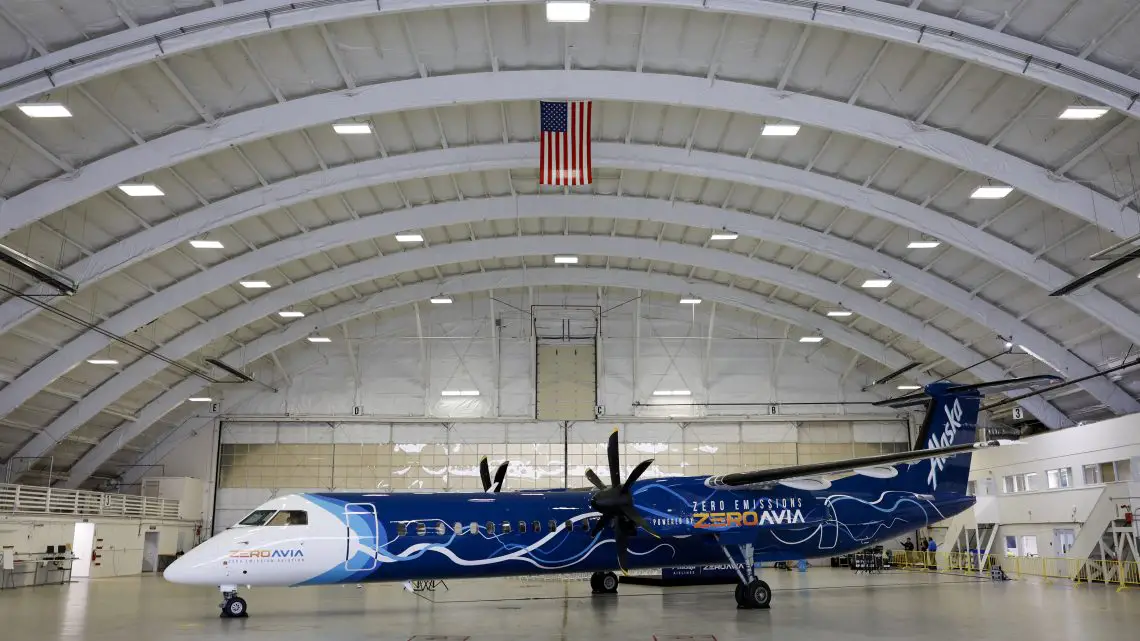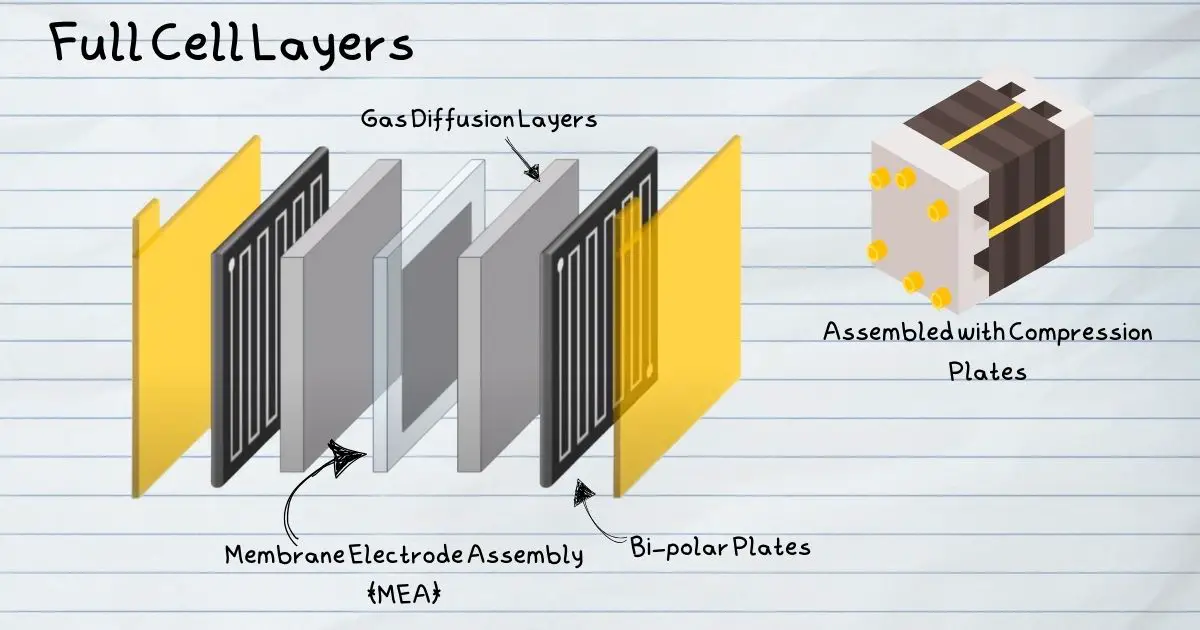
ZeroAvia’s Hydrogen Fuel Cells – Unlocking Efficient, Longer Flights
April 14, 2024In a landmark development for the aviation industry, ZeroAvia is making headway with its pioneering high-temperature hydrogen fuel cell technology. The green tech innovator is creating waves, offering a sustainable alternative that could significantly reduce commercial aviation emissions. This article provides an inside look into ZeroAvia’s operations and the technical strides the company is making.
The Imperative of High Energy Density in ZeroAvia Technology and Aviation
Addressing the carbon footprint of commercial flights, particularly from larger aircraft on long-distance routes, has become a pressing issue. ZeroAvia is responding to this need by prioritizing high energy density, which is vital for aircraft operation. The company’s commitment to developing hydrogen electric and fuel cell-based powerplants demonstrates its vision for a high-powered, low-emission future.
The Edge of High-Temperature Fuel Cells
The unique feature of ZeroAvia’s technology is the turbocharging capability of its high-temperature hydrogen fuel cells. Operating at higher temperatures distinctively permits the use of air cooling over water cooling systems, simplifying the design and enhancing the power efficiency. The ability to harness the generated heat and pressure for turbocharging further distinguishes these cells from more conventional low-temperature variants.
A crucial aspect of the high-temperature hydrogen fuel cells is their ability to operate at elevated temperatures, which, surprisingly, boosts both their efficiency and longevity. This is because objects at higher temperatures dissipate heat faster than those at lower temperatures, a principle that plays a vital role in aviation by addressing the challenge of heat management in power systems. By harnessing this phenomenon, their technology not only operates more efficiently but also promises greater reliability along with longer flight times due to this straightforward cooling solutions compared to traditional systems. This innovation is key to advancing not only sustainable aviation but can be applicable in trains, trucks, ships, and vehicle technologies.
Delving into Fuel Cell Mechanics
At the heart of ZeroAvia’s system lies the proton exchange membrane (PEM) fuel cell. Its key components include bipolar plates, gas diffusion layers, and the membrane electrode assembly (MEA). Hydrogen gas and oxygen from the air enter the fuel cell separately. Hydrogen is split into protons and electrons, with the protons passing through the membrane to the cathode. The electrons are pushed through an electrical circuit, creating electricity. The protons and oxygen combine at the cathode to form water, with heat being the only byproduct.
Understanding Fuel Cell Technology:
- Proton Exchange Membrane (PEM): At the core of the technology, the PEM facilitates the chemical reaction that generates electricity, acting as a critical pathway for protons.
- Key Components: The fuel cell is composed of bipolar plates, gas diffusion layers, and a membrane electrode assembly (MEA).
- Functionality: Hydrogen gas enters one side of the fuel cell, and oxygen from the air enters the other. Upon encountering the catalyst, hydrogen splits into protons and electrons. The protons move through the PEM to the cathode, while electrons travel through an external circuit, generating electricity.
- Output: The reaction culminates at the cathode, where protons, electrons, and oxygen from the air combine to produce water and heat, highlighting the system’s efficiency and environmental friendliness.
Aviation Technology – Advancing Through Challenges
Successfully developing high-temperature fuel cells that fit into lightweight frameworks suitable for aircraft has presented ZeroAvia’s experts with formidable tests. To prevent corrosion, the engineers innovated a protective layer for the aluminum bipolar plates. Such advancements are essential in maintaining efficiency and ensuring the durability of fuel cell components.
Overcoming Challenges in High-Temperature Fuel Cells:
- Corrosion Resistance: A notable engineering challenge was adapting lightweight aluminum for use within the fuel cells’ corrosive environment, solved by developing a protective and conductive coating for the bipolar plates.
- Conductivity and Flow: The design optimally maintains conductivity and enables effective molecule flow within the fuel cell, critical for its operations.
The Foundations of Electrical Generation
Within these cells, carbon cloth electrodes coated with a platinum catalyst are central to splitting hydrogen for electrical generation. ZeroAvia’s enhancements to the catalyst coating have boosted both performance and cost-effectiveness, demonstrating the team’s ability to optimize critical aspects of the technology.
The Role of Catalysts and Electrodes:
- Catalyst Efficiency: The electrodes, made from carbon cloth coated with a platinum catalyst, play a pivotal role in the hydrogen splitting process, with optimized coating increasing both performance and cost-effectiveness.
- Electrical Generation: This innovation ensures the efficient and economic split of hydrogen for electricity generation.
Testing the Boundaries of Power Output
The robustness and power of the fuel cell stack are vetted through rigorous testing. ZeroAvia’s engineers meticulously assemble stacks, aiming to scale voltage and power, with aspirations for the systems to clock 10,000 hours of operational time, reinforcing the longevity of their innovative technology.
Assembling and Testing the Fuel Cell Stack:
- Stack Construction: The fuel cell stack, an assembly of multiple cells, is designed to enhance voltage and power output, constructed by layering bipolar plates, MEAs, and gas diffusion layers in sequence.
- Performance Goals: Through rigorous testing, ZeroAvia aims for the fuel cell stack to achieve 10,000 hours of operational time, promising remarkable durability and efficiency.
Here’s More About How it All Works
ZeroAvia Pioneering Beyond Aviation’s Horizon
While aviation is ZeroAvia’s main stage, the implications of their high-temperature fuel cells extend well into other sectors, producing a ripple effect across various modes of transport that include marine and land. Lightness and efficient thermal management stand out as cornerstones of these applications. Nevertheless, the company recognizes the hurdles that await, particularly in crafting suitable regulatory frameworks and a viable hydrogen infrastructure.
In conclusion, ZeroAvia is at the forefront of revolutionizing aviation through its cutting-edge hydrogen-electric engines that promise an eco-friendly future with zero-emission flights. By harnessing the power of hydrogen in fuel cells to generate electricity, which in turn powers the aircraft’s propulsors, ZeroAvia turns the vision of clean aviation into impending reality, producing nothing more than water as a byproduct.
This innovative approach not only positions ZeroAvia as a trailblazer in sustainable aviation but also offers passenger and cargo operators, along with aircraft lessors, a golden opportunity to retrofit their fleets for a greener tomorrow. With the ZA600 engine set to cater to 9-19 seat aircraft by 2025 and the ZA2000 engine targeting 40-80 seat aircraft by 2027, ZeroAvia’s roadmap is clear and compelling. Collaboration with Airframe OEMs ensures the integration of engines into both existing and future aircraft designs, further demonstrating the scalability of ZeroAvia’s solutions.
Meanwhile, the company’s efforts to work alongside airports to establish the necessary hydrogen production, storage, and distribution infrastructure underline its commitment to enabling zero-emission routes globally. ZeroAvia not only envisions a clean, sustainable future for aviation but actively paves the way for its realization.
*Main Image Credit: Joe Nicholson-Alaska Airlines



 HFN News is your leading source for fresh hydrogen and renewable energy updates. Amid the fast-paced growth of hydrogen companies, we provide top-notch news and insights about this exciting sector. Our coverage spans from hydrogen cars to global sustainable initiatives, and we highlight the latest in green jobs and developing hydrogen hubs. We invite you to share your local hydrogen news and explore today’s renewable energy job listings on our site. Thanks for choosing HFN News as your trusted guide to the hydrogen and renewable energy world!
HFN News is your leading source for fresh hydrogen and renewable energy updates. Amid the fast-paced growth of hydrogen companies, we provide top-notch news and insights about this exciting sector. Our coverage spans from hydrogen cars to global sustainable initiatives, and we highlight the latest in green jobs and developing hydrogen hubs. We invite you to share your local hydrogen news and explore today’s renewable energy job listings on our site. Thanks for choosing HFN News as your trusted guide to the hydrogen and renewable energy world!
